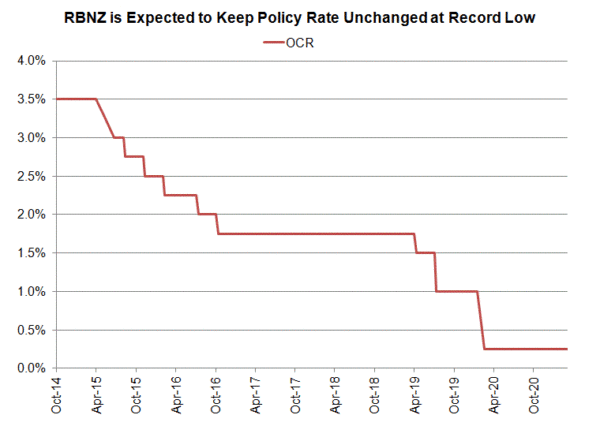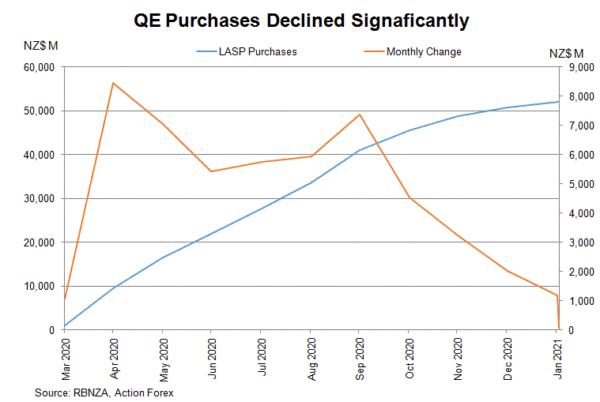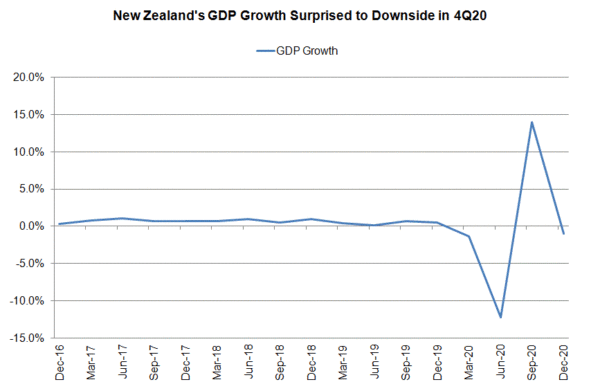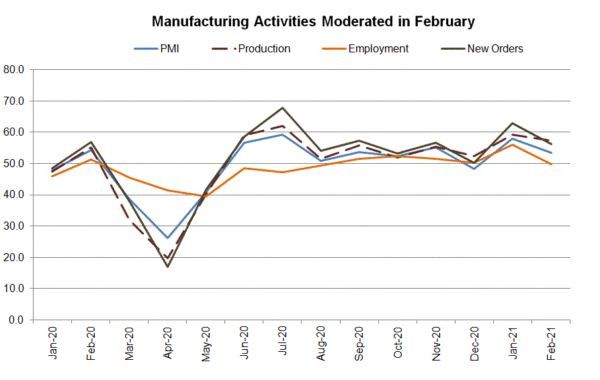Economic developments have been mixed since the February RBNZ meeting. Inter-meeting data show deceleration in the growth momentum, while inflation expectations have soared. Government’s measures to curb property prices would be another factors easing the growth outlook, while the Trans-Tasman travel bubble could offer help to pandemic-ridden sectors in the country. We expect the RBNZ to leave all policy measures unchanged with the OCR at 0.25%. On asset purchases, the LSAP program would stay at NZ$100B while the Funding-For-Lending program (FLP) remains in place.
There have been mixed developments since the February meeting. Domestically, economic data suggest that the growth momentum has moderated. GDP surprisingly contracted -1% q/q in 4Q20, compared with RBNZ’s projection of 0%. Following a solid start in the beginning of the year, manufacturing activities eased. The manufacturing PMI plunged -4.6 points to 53.4 in February. A number of sub-index values were all down from January “with Production (57.3) leading the way, followed by New Orders (56.2). Both Employment (49.8) and Deliveries (47.6) remained in contraction, with the former reverting back to levels seen in December”. Market sentiment dropped. The preliminary reading for ANZ’s business confidence declined to -8.4 in April, compared with the final reading of -4.1 in March.
Inflation expectations, however, spiked. This is a phenomenon facing different economies. As suggested in the ANZ business confidence report, the index for “pricing intention” rose +5.6 points to 52.9 in April. The accompanying report noted that “cost pressures are intense”. Yet “subdued profitability expectations suggest firms are not optimistic about their ability to recoup all of it”. The report added that “shipping disruptions, rising global commodity prices, the higher minimum wage, and skill shortages” are “inflationary, but not growth-friendly”. We expect the central bank to regard the development as “transitory” and would not impose measures on it.
The government’s change in the housing tax policy presents a downside risk to the country’s growth outlook. The removal of interest deductibility for property investors would likely cool down the housing market, a key support of the economic recovery. A rapid slowdown in property price growth could ease consumer spending and construction activity later in the year. The RBNZ would certainly consider this in the monetary policy outlook.
The travel bubble with Australia is, however, a positive development. Australian visitors accounted for around 40% of visitors to New Zealand and 25% of visitor spend. The revival of the tourism industry could boost the sectors which have been suffering for months due to the pandemic.
Against the economic backdrop, the RBNZ would likely keep its powder dry for the month. It should pledge in the policy statement to “maintain the current stimulatory level of monetary settings in order” to meet its objectives, and note that “considerable time and patience” will be needed.

















